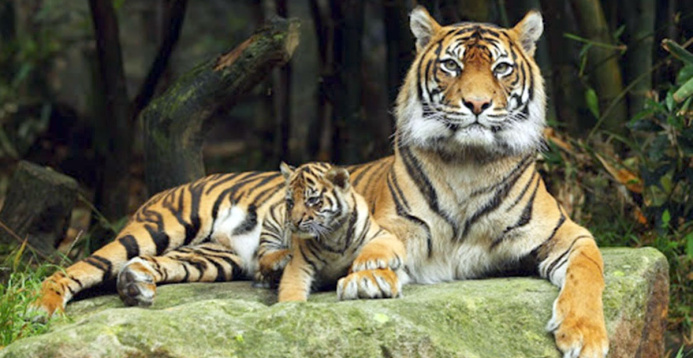Is it possible to “resurrect” the Caspian tigers?
01.07.2020 | 16:09 |Few have heard of the Caspian tiger - one of the largest cats in the world, living in vast territories from Turkey to Northern China, wandering along the banks of the Amu Darya until the mid-20th century. Three-meter brown predators, weighing more than two hundred kilograms, disappeared from the face of the earth due to the destruction of tugai forests (coastal and river ecosystems of trees, shrubs and swamps), left to the irrigation projects of the century.
But scientists hope to return the lost pearl of the Central Asian fauna to at least nature reserves to give the extinct species another chance. Biological Conservation magazine presented a study whose authors propose to restore a population of 100 tigers based on the Amur tiger and the remains of the formidable Caspian cats preserved in museums. Zoologists even allegedly named a place in which newly bred animals could live quietly for 50 years - in the Ile-Balkhash region of western Kazakhstan.

- The idea of reintroducing tigers in Central Asia using the Far Eastern Amur tiger as an “analogue” species has been under discussion for 10 years. She was significantly supported by the Kazakh government in 2010 during the Global Tiger Rescue Forum in St. Petersburg,” says Mikhail Paltsin, ESF doctoral student who oversaw the analytic aspects of the study.
However, the program, among other things, needs an unshakable scientific base to assess the full potential of the habitat for tigers and a deeper study of the various possible results.

The restoration of the tiger species depends on many factors, including environmental ones. Lands in the region are degrading due to unstoppable seasonal fires, which have become more frequent as the climate warms.
Yes, and the "forage" base for predators will also have to be restored - in the area supposed to be settled by cats, due to hunting, reduction of pasture lands and other factors, the number of wild ungulates has decreased. Its restoration will take at least 15 years.
Scientists consider the third concern to ensure human security and provide them with the socioeconomic benefits of restoring the Caspian tiger population. In this case, it is proposed to develop the tourism industry of the region at the expense of available natural resources - to attract people to Lake Balkhash, to reveal the prospects of small business to provide travelers and increase employment in the Ile-Balkhash nature reserve.

Scientists hope that the restoration of the Caspian tiger will be another step that will push the countries of the region and the world towards more conscious and sustainable construction and consumption, both in agriculture and in the industrial sector.











